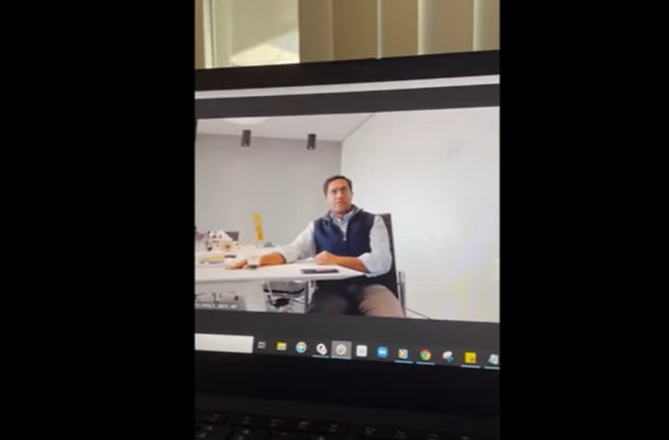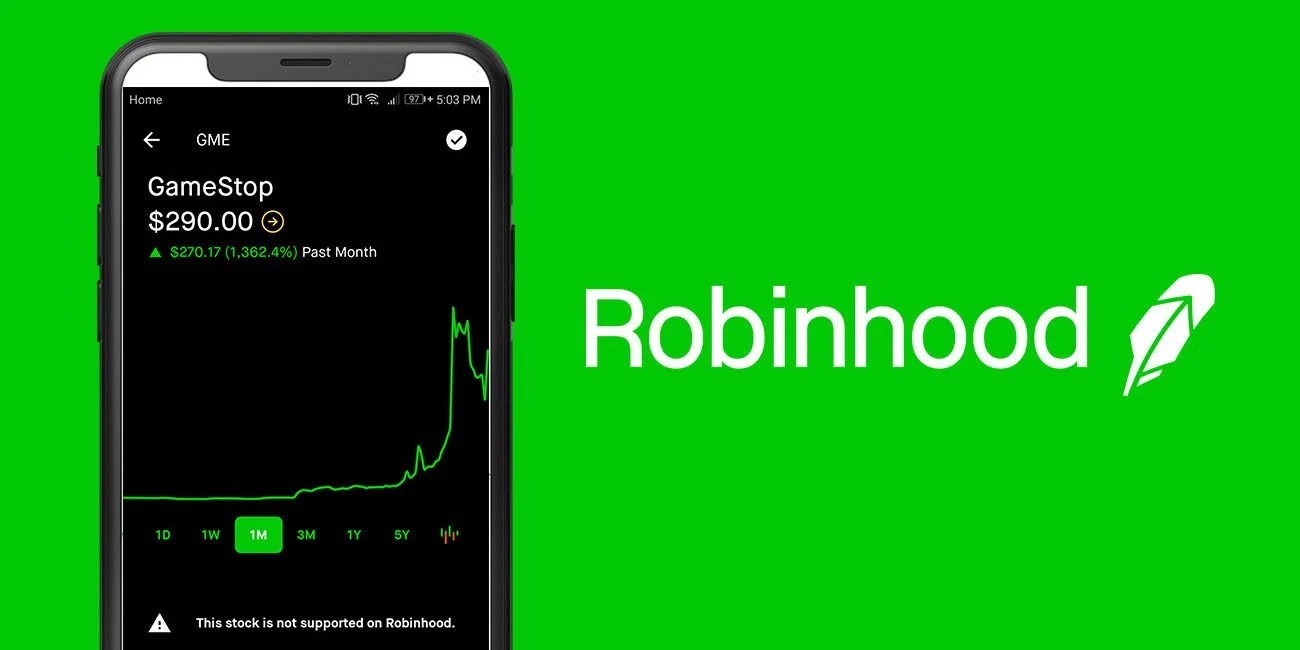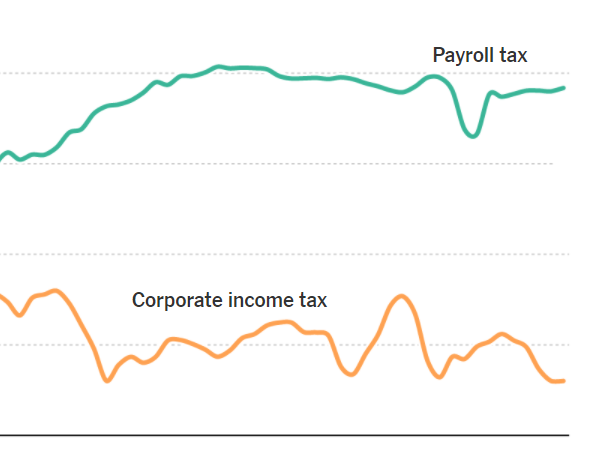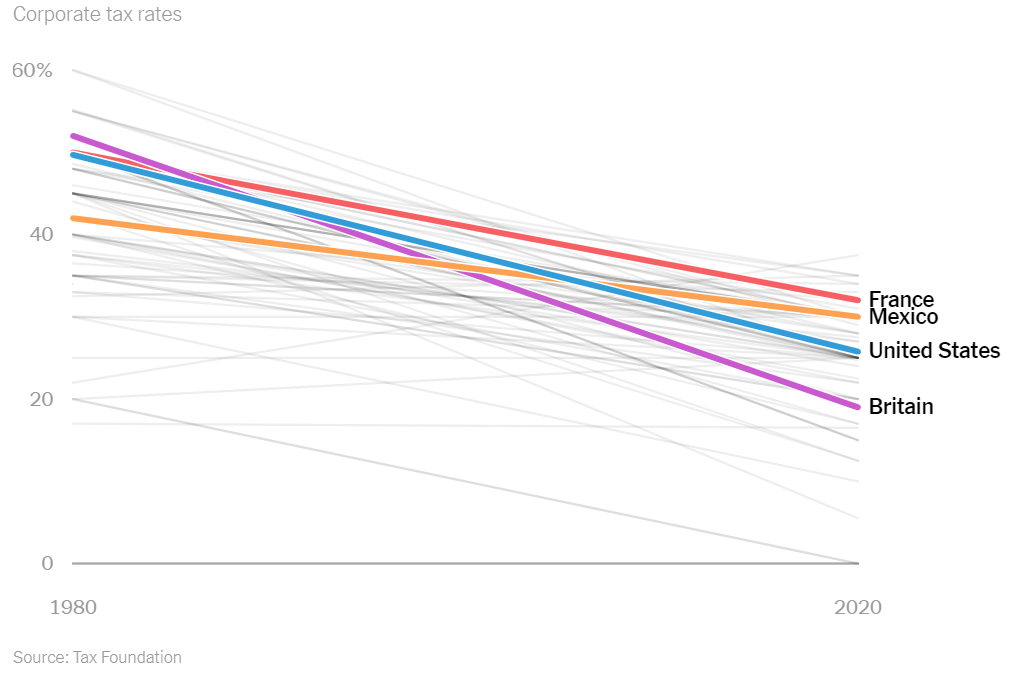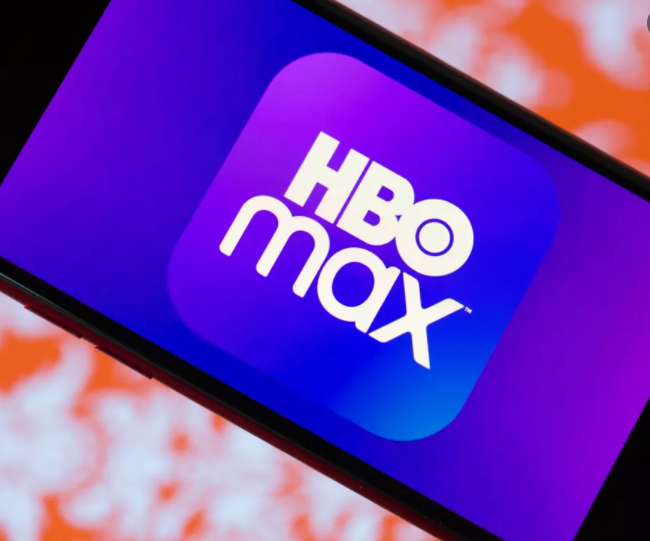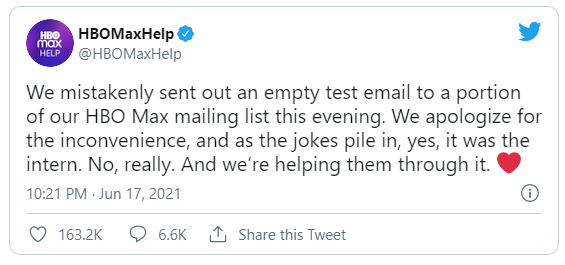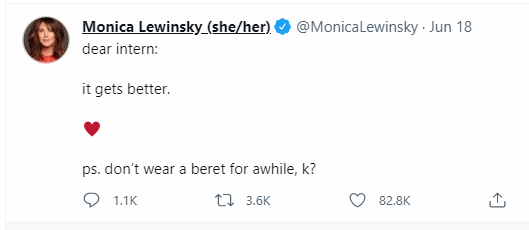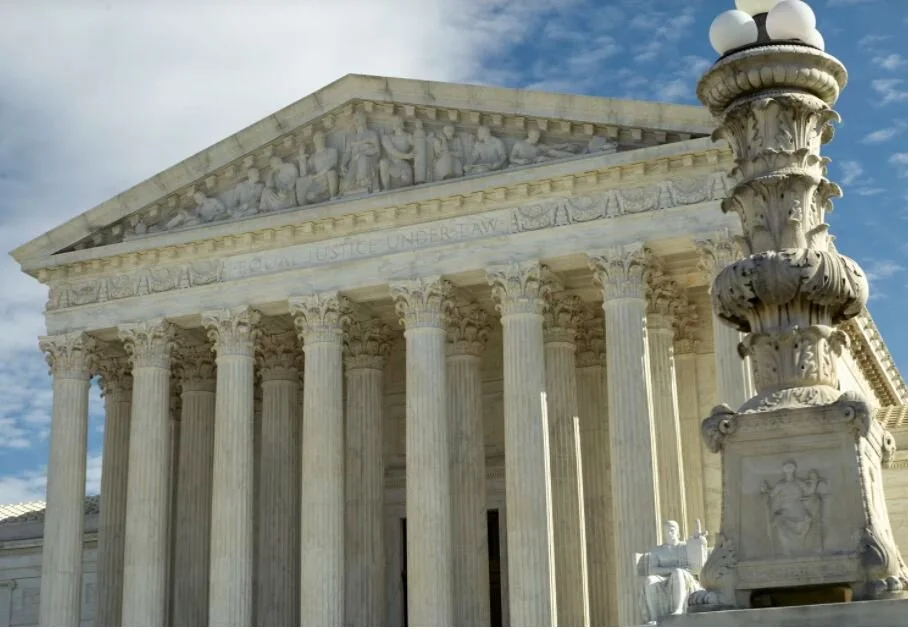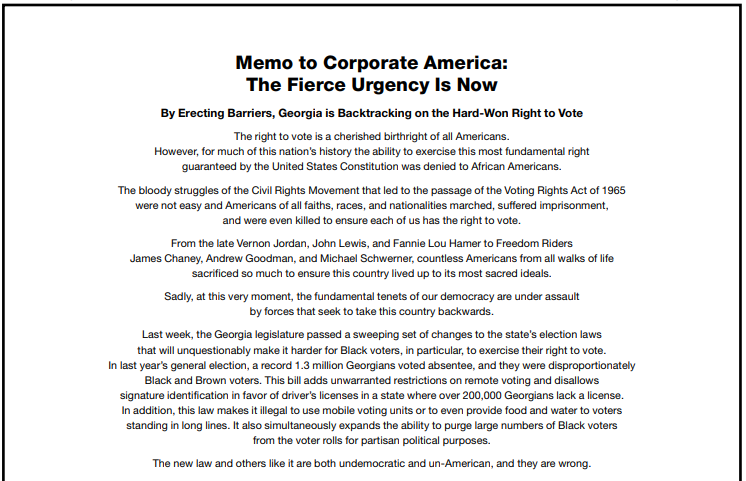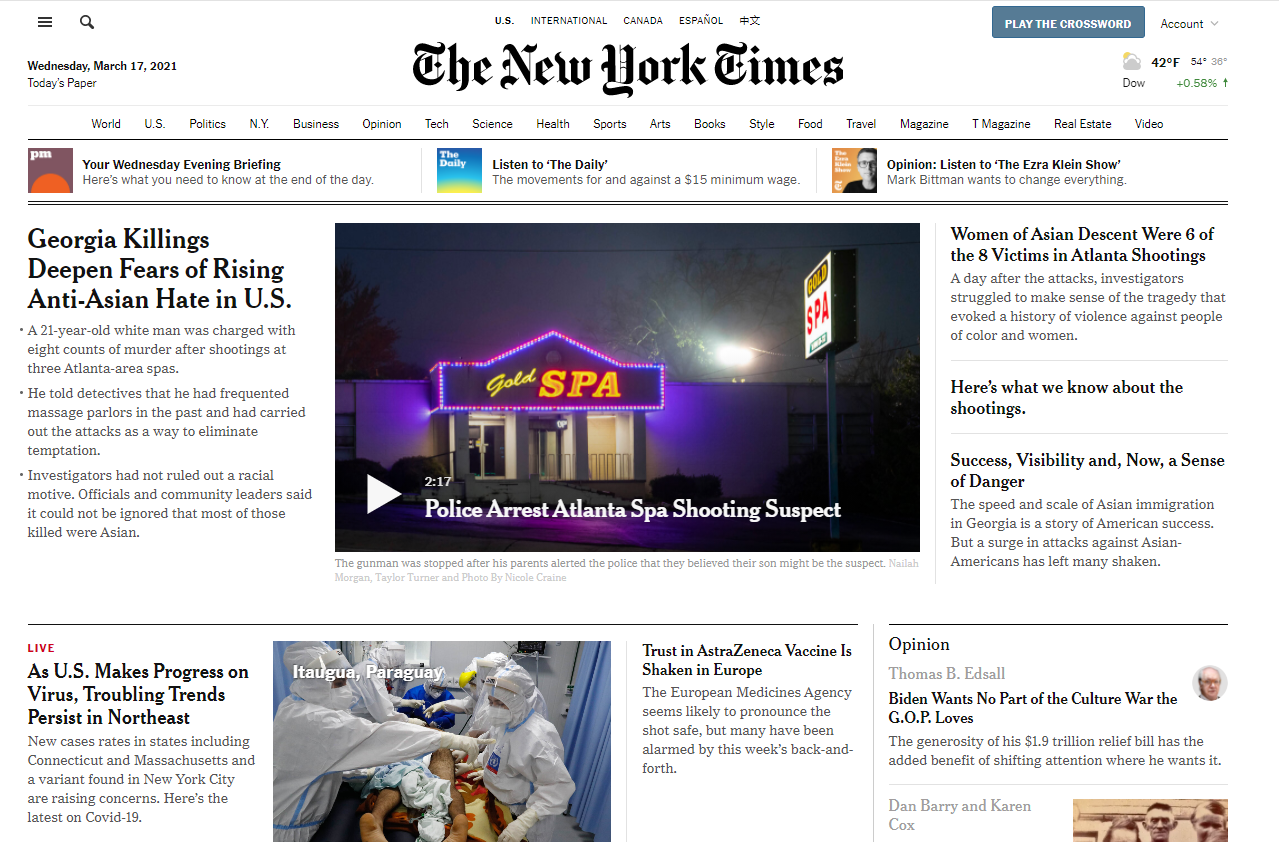Layoffs by Zoom Call + Updates
The CEO of U.S. mortgage company Better.com announced via Zoom that 900 employees, about 15% of the company, were being laid off. Vishal Garg invited people in the exiting group to the call and then dropped the news: “If you’re on this call, you are part of the unlucky group being laid off. Your employment is terminated effective immediately.” In a way, the Zoom call replaces an email typically sent to all employees before they meet individually with an HR representative.
The video is circulating on YouTube, and we hear one employee’s reaction as she watches: “You’ve gotta be kidding me. After all we did for the company! . . . I can’t believe this. This is not real.”
Certainly, this doesn’t reflect well on the company, particularly because it’s right before year-end holidays. News articles also question Garg’s management style and financial dealings. After the layoffs, he was quoted accusing employees of “stealing” from their coworkers by being unproductive. Reports also mention an email sent to staff, including, "You are TOO DAMN SLOW. You are a bunch of DUMB DOLPHINS... SO STOP IT. STOP IT. STOP IT RIGHT NOW. YOU ARE EMBARRASSING ME.” In addition, Garg faces lawsuits claiming fraudulent activity and misappropriation of funds.
History aside, CNN describes the Zoom call as “short and emotionless.” At times, Garg focuses more on himself than on employees. He said, “This is the second time in my career I'm doing this, and I do not want to do this. The last time I did it, I cried.”
I will give him credit for taking responsibility during the call, saying it was his decision. He also scheduled a call instead of, say, sending an email. He demonstrated accountability and some courage, but Garg lacked compassion. Overall, I’ve seen worse, for example, layoff by text message.
UPDATES: Garg wrote an apology about how he handled the situation. Although he uses the words “I apologize” and describes some of the impact on employees, the audience doesn’t seem quite right. He writes about the future, which includes employees who are staying but not the 900 who were on the Zoom call.
The Better.com board of directors announced that Garg will take some time off. Perhaps his worst crime is that the video went viral; he should have predicted that.
CVS Statement on Jury Decision
A jury found that Walmart, Walgreens, and CVS contributed to the opioid crisis and will have to pay damages to Ohio counties. Plaintiffs argued that, as a New York Times article explains, pharmacists are “gatekeepers who have a duty to question suspicious prescriptions.”
The drug stores will likely appeal, and CVS published a statement disputing the decision:
We strongly disagree with the decision. Pharmacists fill legal prescriptions written by DEA-licensed doctors who prescribe legal, FDA-approved substances to treat actual patients in need.
We’re proud of the substantial work we’ve done to support our pharmacists in detecting illegitimate prescribing. But the simple facts are that opioid prescriptions are written by doctors, not pharmacists; opioid medications are made and marketed by manufacturers, not pharmacists; and our health care system depends on pharmacists to fill legitimate prescriptions that doctors deem necessary for their patients. We look forward to the appeals court review of this case, including the misapplication of public nuisance law.
As plaintiffs’ own experts testified, many factors have contributed to the opioid abuse issue, and solving this problem will require involvement from all stakeholders in our health care system and all members of our community.
CVS uses a classic crisis-communication strategy to deflect blame: zoom out and look at the entire system. True, the opioid crisis is complex, but this jury found that pharmacists are part of the problem and should be held accountable.
Jack in the Box Statement: More Well Wishes
Restaurant workers across the country are demanding higher wages and better working conditions, and Jack in the Box is one targeted group. In California, unions are lobbying for The Fast Recovery Act, which would hold corporate offices accountable if franchisees don’t comply with regulations. Today, that responsibility lies with individual stores, making it more difficult for employees to get mandatory Covid 19 protections and sick pay.
A local Jack in the Box didn’t response to a PBS NewsHour request for comment, but the corporate office sent a statement. I see the message only on the video (at 4:33), so here’s a blurry image. Note the much-maligned “hope you are well”—two variations. The first, in slightly larger font, looks like part of a template that wasn’t deleted. In this case, both are superfluous and insincere—like announcing the author’s name, which is at the bottom of the note, and the rest of the statement, in my opinion.
Nothing in the message acknowledges problems or provides plans to improve the situation. It’s defensive and does not inspire confidence in the brand. I see a lack of accountability and willingness to be vulnerable and learn from failure.
Robinhood's Breach Notice
In a blog post, Robinhood announced a “data security incident.” Business communication students will notice several examples of downplaying the situation, including giving numbers of people affected more significantly (310) but no numbers for the total.
Language seems intentionally complex, for example, “The unauthorized party socially engineered a customer support employee by phone and obtained access to certain customer support systems.” In other words, someone called a Robinhood employee and impersonated another employee. The employee fell for this deceit without seeking proof.
Robinhood seems to take no responsibility and identifies no plans for future action to prevent a similar “incident.” The chief security officer provides template text: “As a Safety First company, we owe it to our customers to be transparent and act with integrity. Following a diligent review, putting the entire Robinhood community on notice of this incident now is the right thing to do.”
Skewed Chart Example
Dopesick on Hulu includes a great example of a compressed chart scale. The show is about the opioid crisis and features the Sackler family and Purdue Pharma’s role in convincing doctors that OxyContin is not addictive. To prove the point, Purdue shared this graph, showing that the “time release” capsules don’t cause mood spikes (“fewer peaks and valleys”). The trouble, as business communication students can observe, is the Y axis.
In Episode 6 (around 21 minutes), we hear the explanation: “But see what Purdue did? They dramatically compressed the scale.” On the chart, we see that 30 looks to be the midpoint. They used a logarithmic instead of a linear scale to homogenize or “smooth out” the data. (Here’s a good explanation of logarithmic scales.)
In the show, an FDA official says they instructed Purdue Pharma not to use the chart, but the company did anyway. Of course, I’m not sure what happened, exactly, and I didn’t get the court filings to verify the chart.
The show offers many other examples of the company’s persuasive communications and the tragic effect on people’s lives. For more research about Purdue’s misleading communications, see this LA Times article. Also read a fascinating trove of Purdue emails here.
Failing Data Analysis in the Theranos Trial
The criminal trial against Theranos Founder and former CEO Elizabeth Holmes now focuses on testimony from Safeway, Walgreens, and Johns Hopkins University. Questions involve how these companies evaluated Theranos’ blood-testing technology and concluded that it was sound when, in fact, results was consistently false.
At this point in the trail, investors blame Holmes, whose defense is that the companies did due diligence and are responsible for their decisions. A Wall Street Journal article about the arguments highlights the companies’ and the university’s failings and over-reliance on Holmes’ claims.
As the relationship between Safeway and Theranos progressed, CEO Steve Burd wrote an email to Theranos with the subject, “Becoming Discouraged.” He testified, “I think whenever you start something new you’re going to have some rough spots, but we continued to have rough spots. We had samples that were lost. We had results that didn’t make any sense.”
We’ll see how the trial evolves, but clearly, experts needed to ask more questions up front. In some cases, they didn’t test the actual technology themselves. This story is a good example of failures in integrity and data analysis—perhaps for many involved.
Raiders Coach’s Language and Resignation
The New York Times described emails sent by Raiders Coach Jon Gruden that included racist, homophobic, and sexist language. In his statement, Gruden wrote a short statement on the Raiders’ Twitter account.
The statement isn’t exactly an apology, as we define it in business and corporate communication. Gruden doesn’t describe his behavior or the impact on others.
Raiders owner Mark Davis wrote an even shorter statement: “I have accepted Jon Gruden’s resignation as Head Coach of the Las Vegas Raiders.”
Critics of the decision evoke the “cancel culture,” while others believe Gruden’s comments were outlandish. In a business environment, his language would never be acceptable. The NY Times article quotes Gruden, which I’ll avoid here.
Opening Statements in the Theranos Trial
Elizabeth Holmes is facing a criminal trial for her role in the spectacular success—and spectacular failure—of Theranos, a startup that claimed to change how people give blood and get health results. The high-profile case involves board members like Henry Kissinger and Rupert Murdoch, who believed in the company and in Holmes.
Opening statements are a lesson in persuasive communication. The prosecution said, ”This is a case about fraud and about lying and cheating to get money.” They accuse Holmes of knowing that test results were invalid and continuing the business as usual. Pointing to the fame Holmes received, prosecutors paint a picture of a desperate, failing executive who would do anything to protect her business and reputation.
The defense team presents Holmes as a victim—a hardworking entrepreneur doing her best and challenged by mental abuse from Ramesh Balwani, the company COO and her former boyfriend.
Each side framed their positions, and now we’ll see what evidence they present to support their claims. Holmes could face 20 years in prison, which is unusual for a corporate CEO. The second day of the trial was cancelled because a juror was possibly exposed to COVID-19. The drama continues…
Robinhood's Strategy Faces Regulatory Questions
Robinhood is in the news again for its marketing tactics. I featured the investment app in the 11th edition of Business Communication and Character for its aggressive communication, including gaming graphics, to lure young, inexperienced investors into trading.
When users open a Robinhood account, they receive a free share to get started. This requires a proxy statement to be delivered to the user, which costs small companies a lot of money—for very few purchased shares. New regulations may prevent companies like Robinhood from seeking reimbursement.
Users don’t get any great bargain. As a Wall Street Journal writer explains, “Customers have a 98% chance of receiving a share priced between $2.50 and $10.”
Robinhood has maintained its defense as it faces increased scrutiny. A spokesperson said, “Customers love our free-stock program, and we think it fits squarely into our mission to democratize finance for all.”
This situation is another example of how the company’s strategy benefits some but negatively impacts others. For that reason, the communication becomes an issue of character—failing to consider the effect of one’s actions.
Apple Clarifies Policy
Apple software chief Craig Federighi spoke with a Wall Street Journal reporter about a misunderstood policy related to child pornography. The company had announced new reporting guidelines for illegal content. As part of the same message, they described new guidelines about photos sent to and from children. User backlash concerned how the company was monitoring their phones.
Federighi said, “I do believe the soundbite that got out early was, ‘Oh my God, Apple is scanning my phone for images.’ This is not what is happening.” He clarified that, using algorithms, they’re looking at photos stored on iCloud—not on people’s phones. The company is flagging only those photos that meet criteria of child pornography.
During the published interview with the WSJ reporter (what made the final cut on the website), Federighi didn’t emphasize the end goal: protecting children. The reporter provided this context, but the message was not at the forefront’s of Federighi’s main points. His focus was on clarifying the initial message: “I think our customers own their phones,” again, distinguishing what we choose to post on Apple’s server.
Federighi also demonstrated humility by admitting that the message was garbled and that AI technology does make mistakes. In hindsight, it sounds as though Federighi would have announced these guidelines in separate messages with more detail about the photo search process.
Millennials Talk Openly About Salaries
According to a Wall Street Journal article, millennials don’t carry the salary baggage of previous generations. Growing up in the open world of social media, this generation is used to sharing information about themselves that older people might consider taboo. In addition to salaries, millennials talk about credit card debt, savings, and other financials.
The transparency is helpful to other people their age. Employees can negotiate for fair salaries and, in some cases, not feel shame around money because they know that others are either in similar situations or have advantages that they don’t enjoy. The article also cites examples of people feeling better about their circumstances knowing that others carry a lot of debt, while they choose not to.
The article reminds me of the idea of “radical transparency” practiced at Bridgewater Associates and, to a lesser degree, some other companies. Being open about employees’ performance and compensation can cause hard feelings but may encourage a greater degree of fairness.
Clear Line Charts
A New York Times opinion article illustrates the power of the line chart. With the title, “This Is Tax Evasion, Plain and Simple,” the author describes the U.S. corporate rate over time and compared to other countries.
The authors argue that countries have reduced corporate rates to compete for businesses, and over time, the rate has become too low. The chart at right compares the U.S. to other countries, while the chart below shows the change in U.S. wage and corporate taxes since 1950.
Additional charts show that companies have moved money to tax havens abroad, but economies and workers have not benefitted.
An economist and a writer and graphics editor paired up to produce the article. We see the influence of both—the data, plain language, and charts paint a vivid picture.
Blame the Intern
HBOMax customers received an email with the subject, "Integration Test Email #1,” that obviously wasn’t intended for them. In a follow-up email, the company blamed an intern for the mistake.
Twitter responses poured it to support and empathize with the intern. Embarrassing stories ranged from sending emails to big groups to typos. As an intern, someone replaced all “parties” to “panties” in a 50-page legal document (dare I say “brief”?).
The best was when Monica Lewinsky weighed in.
Interns make mistakes; we all do. Facing the situation with humility—the ability to learn—is the best approach. The HBOMax situation could have been a lot worse, and fortunately, the public turned it around to focus on the shared experience we have all had.
Free Speech Case
In an 8-to-1 vote, the U.S. Supreme Court ruled that a high school cheerleader could use F-bombs on social media. The student was suspended from the team after posting a video and disparaging the team and the school. But the court upheld her right to free speech.
The justices did say that the school has the right to take action when a student’s behavior in person—or online—is disruptive to the classroom, but they didn’t believe that this case warranted the school’s decision.
This was an important decision but left the door open to other cases. As one attorney said, the decision was “common sense,” but others might be greyer and more complex.
Peloton Announces Recalls
After resisting action despite consumer product warnings, Peloton has conceded and is recalling two models of its treadmills. One child died and more than 70 people were injured, so the Consumer Product Safety Commission (CPSC) recommended the recalls a month ago.
In the company statement, CEO John Foley admitted the mistake:
The decision to recall both products was the right thing to do for Peloton’s Members and their families. I want to be clear, Peloton made a mistake in our initial response to the Consumer Product Safety Commission’s request that we recall the Tread+. We should have engaged more productively with them from the outset. For that, I apologize. Today’s announcement reflects our recognition that, by working closely with the CPSC, we can increase safety awareness for our Members. We believe strongly in the future of at-home connected fitness and are committed to work with the CPSC to set new industry safety standards for treadmills. We have a desire and a responsibility to be an industry leader in product safety.
The CPSC said the decision came after “weeks of intense negotiation and effort.” Peloton will suffer financially: the company has stopped selling the treads and is offering a full refund of more than $4,000 for the products. But executives may have spared themselves and the brand some reputation damage if they had acted earlier.
Amazon’s Statement About the Failed Union Attempt
Employees at Amazon’s Bessemer, Alabama, warehouse voted against forming a union. Of 5,876 employees, 1,798 voted against and 783 for the union—not enough. The New York Times presents a simple, clear graphic of the vote.
Critics say that Amazon used aggressive tactics to deter workers from favoring the union. For example, union organizers approached employees at a traffic light, which the city changed based on a request from Amazon management. The change led to longer green lights and shorter red lights based on traffic. Before the vote, the National Labor Relations Board (NLRB) determined that two employees were fired illegally for their union-organizing activity.
In messages to employees, the company used a slogan, “Do it without dues,” meaning employees should negotiate with their managers and not through a union, which charges fees. The slogan was also the URL for a website, which has since been removed.
Amazon posted a statement about the win. The company denies intimidation charges and reinforces its $15 wage and starting benefits. Although the statement indicates that 16% of employees at the facility voted for the union, a higher percentage of those who voted were favorable towards the union.
CEOs Speak Out
JPMorgan Chase published its Annual Report, leading with a letter from CEO Jamie Dimon. The introductory paragraph and corresponding callout quote reflect a leader’s and a company’s grappling with an extraordinary year.
Like many company leaders today, Dimon addresses societal issues directly. We’re seeing increasing employee and CEO activism, and this letter is a good example.
A Wall Street Journal opinion piece questions when leaders are even more direct about political events, such as Black leaders in Georgia speaking out against the election law decision. The law restricts voting rights, which doesn’t affect the companies directly. The WSJ editorial board writes, “To wit, they are pitting themselves against the interests of their own shareholders.”
The open letter appeared as a full-page ad in The New York Times, signed by Black CEOs, former CEOs, and others of major U.S. companies.
In my view, the CEOs demonstrate leadership character, particularly authenticity, courage, and integrity. By definition, demonstrating character carries some personal risk.
AstraZeneca's Data Problems
AstraZeneca has been accused of presenting “outdated and potentially misleading” data about the vaccine that has suffered implementation trouble in Europe. In a press release and a CNBC interview with the president, the company reported a 79% effectiveness rate, despite later results between 69 and 75%.
A group of independent experts wrote a letter to U.S. government officials to express their concern, as The Washington Post reports:
The DSMB is concerned that AstraZeneca chose to use data that was already outdated and potentially misleading in their press release,” the letter states. The data “they chose to release was the most favorable for the study as opposed to the most recent and most complete. Decisions like this are what erode public trust in the scientific process.”
The company promised a review: “We will immediately engage with the independent data safety monitoring board to share our primary analysis with the most up to date efficacy data.” But damage is already done.
The Washington Post explains, “But it appears to be the latest in a series of self-inflicted wounds from the team behind the vaccine, which has had months of stumbles involving messy science and bungled communication.”
This latest misstep only complicates a possible U.S. rollout and breeds more skepticism in those who fear the vaccine. Fears in some populations, such as Black Americans, are based on understandable mistrust of the healthcare system, and this news will not likely inspire more participation in plans for herd immunity.
As an issue of credibility, AstraZeneca is caught in a public quagmire. What might have been a small misstep is now viewed as part of a larger, potentially intentional plan to deceive, whether or not that is true. The company’s integrity is in question because they have not been fully transparent about the vaccine results.
Comparing News Reporting About Shooting
How the media reports news reveals their political leanings and inherent biases. Compare the home pages of the New York Times and the Wall Street Journal from screenshots taken the evening of March 17, 2021.
The New York Times led with the news and posted five stories at the top of the page. Stories focus on “Anti-Asian Hate in the U.S.” The Wall Street Journal posted one small article, and the headline makes no reference to the victims—six of the eight were Asian women.
I’m struck by the surrounding articles on the WSJ home page. The business and economy focus makes sense for the paper’s mission, but several other articles imply negative messages about Asians or Asian countries.
The headline about the Tokyo Olympics official, particularly, is quite inflammatory (or as a student in class said, “clickbait”). Although the news is notable given that this is the second official to resign for negative comments about women, the photo and headline, below news of the shooting is, as my partner said, “insensitive.” Do we need the actual negative statement?
Also in fairness to the WSJ, the shooter had not (and as of this writing, has still not) been charged with a hate crime, and he denies the association of bias. Perhaps the NYT is fueling the flames of xenophobia?
And yet, discrimination, bias, and violence against Asians and Asian Americans has been increasing in the U.S. Shouldn’t that be a significant part of any reporting about this terrible shooting?
Royal Family Responds to Racism Allegations
In an interview with Oprah, Prince Harry and Meghan Markle accused the British royal family of racism, and the fallout is severe. Markle talked about having suicidal thoughts and how she had been treated by the family, including plans for the couple’s baby. She said he wouldn’t have a title or security, and that the family had “concerns and conversations about how dark his skin might be when he was born.”
Prince Harry said that he a discussion with his grandmother and two with his father about the couple’s concerns until his father “stopped taking my calls.”
Victoria Murphy, a writer for Town & Country magazine, describes the family’s reaction:
So far, the royal family has remained tight-lipped. There have been no statements and, it seems, very little guidance offered. Perhaps they are retreating into a default “no comment” stance, or perhaps they are sensibly waiting to see what sticks before deciding whether to add fuel to the fire. In this war of words, there is a sense that we could go on and on.
Buckingham Palace did release a short statement, and the Queen took some time before signing off:
The whole family is saddened to learn the full extent of how challenging the last few years have been for Harry and Meghan.
The issues raised, particularly that of race, are concerning. While some recollections may vary, they are taken very seriously and will be addressed by the family privately.
Harry, Meghan and Archie will always be much loved family members.
Of course, the issue is that the royal family is a public organization, with several public figures, whether they wish to be or not.
Two days later, Prince William gave an interview and said, “We’re very much not a racist family.”
Murphy sums up the situation: “Make no mistake, this is an interview that will go down in history as having rocked the British royal family to its core.”

